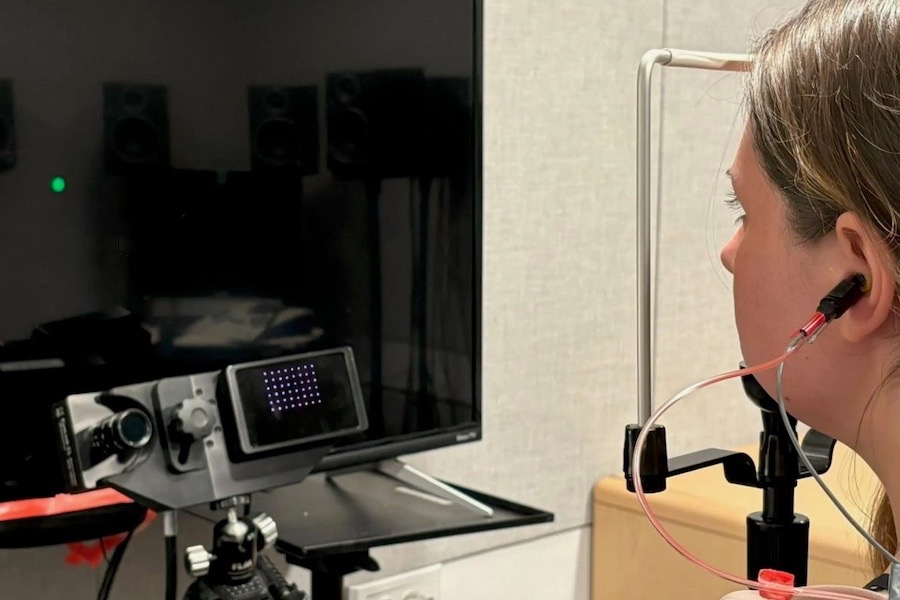Do vision and hearing operate independently? New research reveals an intriguing connection: Your ears make faint, inaudible sounds when your eyes move.
- The sounds were recorded by a highly sensitive microphone placed in the ear canal.
Duke scientists tracked eye movements in 16 test subjects, finding unique soundwave patterns for looking left, right, up, down, or diagonally.
- The researchers found consistent directional information on the soundwaves and, as a result, could calculate where someone was looking only from the ear sounds.
- The distinct sounds are likely due to the stimulation of muscles and hair cells involved in hearing. But why?
- The eye-ear relationship may help the brain match sights and sounds to sharpen our perceptions, such as locating sounds and improving our situational awareness.
“You can actually estimate the movement of the eyes, the position of the target that the eyes are going to look at, just from recordings made with a microphone in the ear canal.” —Jennifer Groh, PhD, Duke University
 Participants tracked a green dot on the screen while researchers listened to the sounds made in their ear canals using microphone-embedded earbuds.
Participants tracked a green dot on the screen while researchers listened to the sounds made in their ear canals using microphone-embedded earbuds.
The intrigue
Lead scientist Prof. Jennifer Groh believes that eye-movement sounds trigger the brain to contract either the middle ear muscles or the hair cells. She hypothesizes that
- Contracting middle-ear muscles help soften loud noise.
- Stimulating hair cells helps amplify quiet ones.
- These actions could help adjust our hearing sensitivity to what we’re looking at.
Why it matters
Decoding eye movements from ear sounds could shed light on perception and lead to new clinical-hearing assessments.
1 big idea
Networked body systems orchestrate our thoughts, actions, and experiences. Exploring this elaborate interaction opens the doors to hearing, vision, and speech innovations.
“If each part of the ear contributes individual rules for the eardrum signal, then they could be used as a type of clinical tool to assess which part of the anatomy in the ear is malfunctioning.” —Stephanie Lovich, one of the lead authors and a graduate student in psychology & neuroscience at Duke.

